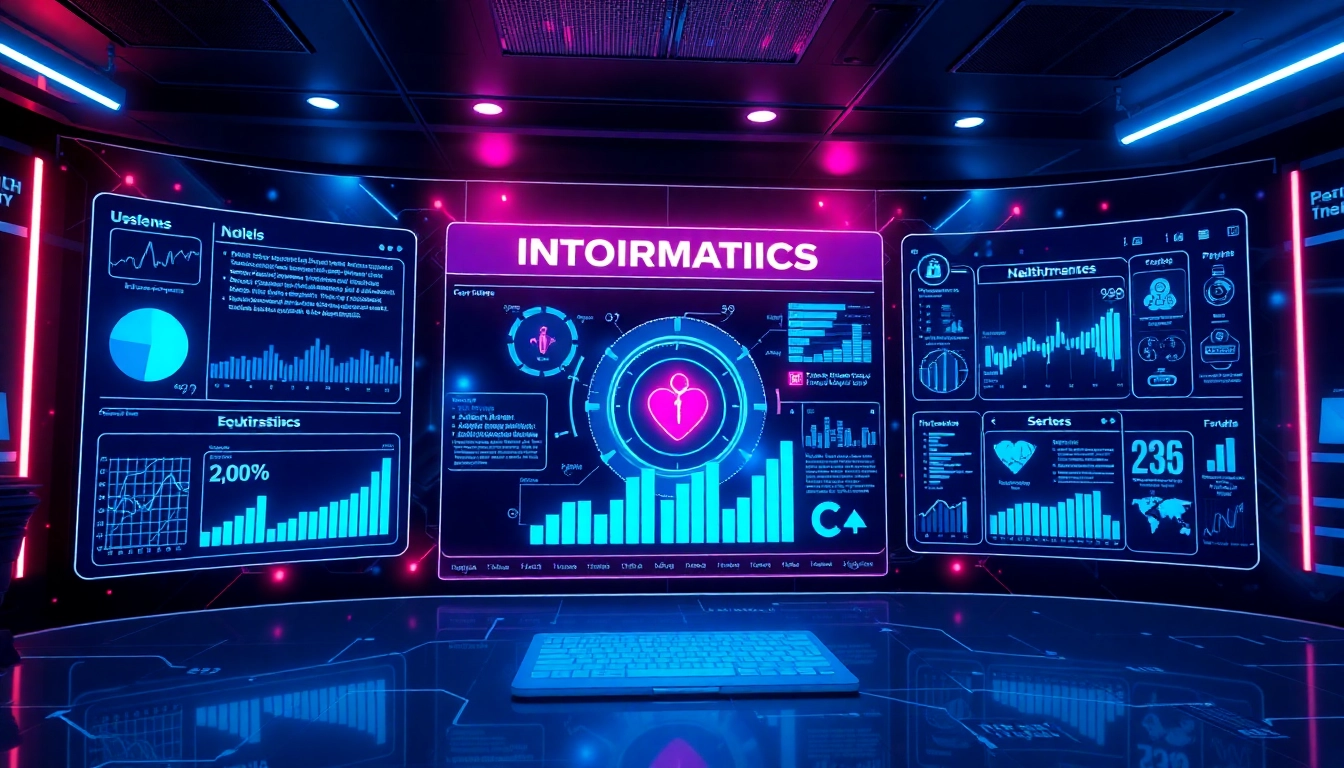Introduction to Health Informatics
Health informatics is a transformative field that blends healthcare, information technology, and data management to enhance patient outcomes and streamline healthcare services. By understanding and leveraging technology, healthcare providers can make informed decisions that ultimately improve patient care. For an in-depth perspective on this crucial topic, visit https://www.informaticsview.com. This article aims to provide a comprehensive examination of health informatics, its various applications, benefits, challenges, and future trends.
Defining Health Informatics
Health informatics is defined as the interdisciplinary study that combines healthcare, computer science, and information technology. Its primary goal is to optimize the storage, retrieval, and use of health information to enhance healthcare delivery. According to Wikipedia, this field is fundamental to improving patient safety, outcomes, and the efficiency of healthcare systems.
Importance of Informatics in Healthcare
The significance of health informatics in the modern healthcare landscape cannot be overstated. As the volume of healthcare data continues to grow exponentially, the need for efficient management systems becomes crucial. Health informatics plays a vital role in:
- Data Management: Integrating disparate data sources into a cohesive system enhances access to information across healthcare facilities.
- Improving Communication: Digital tools provide avenues for real-time communication between patients and healthcare providers, fostering better relationships and quicker interventions.
- Enhancing Decision-Making: Informatics tools aid clinicians by providing the necessary data to inform clinical decisions, leading to improved patient outcomes.
Key Technologies in Health Informatics
A multitude of technologies underpin the field of health informatics. Some of the most significant include:
- Electronic Health Records (EHRs): These secure, digital versions of patients’ paper charts provide real-time, patient-centered records that make information available whenever and wherever it’s needed.
- Clinical Decision Support Systems (CDSS): These tools provide healthcare professionals with knowledge and person-specific information to enhance decision-making at the point of care.
- Telehealth Technologies: The emergence of telemedicine has transformed how healthcare services are delivered, making it easier for patients to access care from remote locations.
Applications of Health Informatics
Electronic Health Records (EHR)
Electronic Health Records (EHRs) are at the forefront of health informatics applications. By digitizing health records, they allow for safer, more efficient, and seamless sharing of patient information among healthcare providers. EHRs contribute significantly to improving the quality of care as they reduce the risk of errors associated with handwritten records. They also streamline the workflow by enabling clinicians to access accurate patient information instantly.
Clinical Decision Support Systems (CDSS)
Clinical Decision Support Systems (CDSS) are crucial tools that integrate patient data with medical knowledge to assist healthcare providers in decision-making. These systems can alert clinicians about potential adverse drug interactions, suggest evidence-based treatment protocols, or flag critical laboratory results. The implementation of CDSS in clinical practices has shown to increase adherence to clinical guidelines and improve patient safety.
Telemedicine and Remote Patient Care
Telemedicine technologies have revolutionized patient care, allowing healthcare providers to diagnose and treat patients remotely using video conferencing and mobile applications. This approach expands access to healthcare services, especially for patients in rural or underserved areas. Telehealth solutions not only reduce travel expenses and time for patients but also enable healthcare professionals to monitor chronic conditions efficiently.
Benefits of Health Informatics
Improving Patient Outcomes
One of the most significant benefits of health informatics is its potential to improve patient outcomes. By leveraging technology, healthcare providers can ensure safer and more effective treatment plans tailored to individual patient needs. The real-time access to comprehensive health information allows for timely interventions, plays a crucial role in chronic disease management, and enhances the overall quality of care.
Enhancing Data Management
Effective data management is foundational to healthcare informatics. Advanced data analytics tools help healthcare facilities track patient interactions and outcomes, enabling proactive decision-making. The organized storage of health data facilitates easier reporting and analysis, which can reveal patterns that inform future clinical practices or resource allocation.
Streamlining Healthcare Operations
Health informatics streamlines numerous operational processes in healthcare settings. Automation of administrative tasks reduces the administrative burden on healthcare providers and staff, leading to increased productivity. For instance, appointment scheduling, billing, and inventory management can be managed using specialized informatics systems, freeing up time for healthcare workers to focus on patient care.
Challenges in Implementing Health Informatics
Data Privacy and Security Concerns
With the digitization of health records and the synchronization of health data, data privacy and security concerns become critical issues. A breach of confidential patient information can have detrimental effects on both patients and healthcare providers. Therefore, robust cybersecurity protocols and compliance with regulations such as HIPAA are essentials in any health informatics implementation.
User Resistance and Adoption Issues
Resistance from users, including healthcare professionals and administrators, can pose challenges to the successful implementation of health informatics systems. Some may fear that technology could replace their roles, while others may find it challenging to adapt to new systems. Providing adequate training and demonstrating the benefits of the new system are vital to mitigating these fears and promoting acceptance.
Integration with Existing Systems
Integrating new health informatics systems with existing legacy systems can prove to be a complex challenge. Compatibility issues could arise, leading to data silos and inefficiencies. Strategic planning and investment in middleware solutions that facilitate data exchange can help overcome these integration hurdles, ensuring a seamless transition that enhances rather than interrupts existing workflows.
The Future of Health Informatics
Trends Shaping Health Informatics
Several emerging trends are poised to shape the future of health informatics dramatically. The increasing reliance on data analytics, the push for interoperability, and the integration of patient-generated health data will redefine how healthcare organizations interact with and leverage health information. The shift towards value-based care is encouraging healthcare systems to adopt informatics solutions that enhance quality while reducing costs.
Impact of Artificial Intelligence
Artificial intelligence (AI) is set to significantly impact health informatics by automating complex processes, improving the accuracy of diagnostics, and enabling predictive analytics. For example, machine learning algorithms can analyze vast datasets to identify trends that may lead to breakthroughs in personalized medicine or population health management. Incorporating AI into health informatics not only enhances efficiency but also allows for more accurate and timely decision-making in patient care.
Opportunities for Innovation in Healthcare
As technology continues to evolve, health informatics will open new doors for innovative solutions in healthcare. Mobile health applications, wearable health tech, and blockchain for secure patient data sharing are just a few innovations on the horizon. These advancements will allow for enhanced patient engagement, better chronic disease management, and improved overall health as healthcare becomes increasingly tailored to patient needs.



